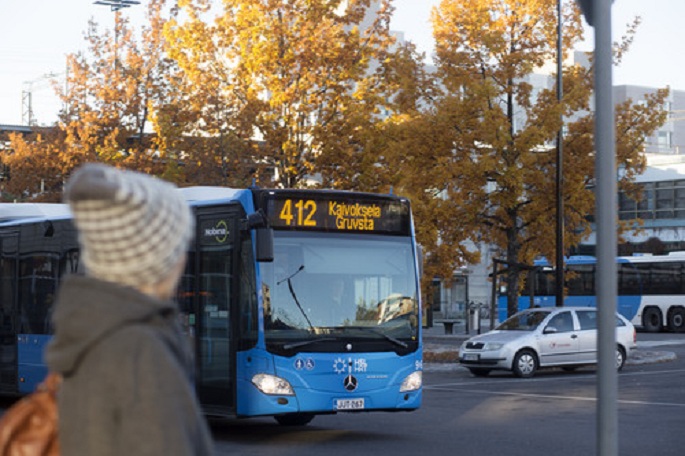Helsinki approves plan to reduce transport emissions
Published : 31 Mar 2019, 20:59
The Helsinki region has found the means to halve transport emissions courtesty of the Land Use, Housing and Transport Plan, MAL 2019, said the Helsinki Regional Transport Authority –HSL.
Created in cooperation by the entire region, the plan lists several concrete means that will make the region low-emission, attractive, prosperous and vibrant by 2030.
In its meeting on 26 March 2019, the HSL Executive Board approved, in its part, the Helsinki Region Land Use, Housing and Transport Plan, MAL 2019 that will help to achieve these goals.
The MAL 2019 Plan proposes transport investments of some EUR 4 billion, of which 85% will be directed to public transport.
“The investments have been planned to make people move in a manner that benefits their own health and also the environment. If the investments are made at the correct time, they will also ensure that services, housing and jobs are located in areas with sustainable mobility,” said Suvi Rihtniemi, the Executive Director of HSL.
The plan is to invest the most, some EUR 3.3 billion in the next ten years, in rail transport. The biggest public transport investments to be launched in the 2020s include the Espoo city rail link to Kauklahti, depots along the main rail line and the coastal line for commuter trains and the Pisara Rail Loop to be built under downtown Helsinki. Capacity of the Pasila-Riihimäki rail line will be increased, and passenger transport on the Kerava-Nikkilä rail line will be started once land use has been developed to a stage where there are enough commuter train users. The light rail network in the region will be expanded by five new lines in Helsinki, Vantaa and Espoo. Capacity of the metro system will be ensured by means of a turnaround track and automation.
Cycling will be promoted by creating a competitive main cycling network. The network will be improved in the next few years by, for example, building a cycling tunnel below Helsinki Central Railway Station and a cycling route between Järvenpää, Tuusula and Kerava along the main rail line.
One of the key goals of the MAL 2019 Plan is to halve greenhouse gas emissions from transport. The aim is to reduce transport emissions by half compared to 2005 by 2030, in compliance with the national transport emission target. The most efficient means of reducing emissions include a strong increase of the share of electric and low-emission vehicles, the introduction of road charges and reducing emissions from buses.
“The Government and municipalities must develop a road charge system for the Helsinki region, assess its impacts and prepare for its commissioning. Legislative amendments will also be necessary before road charges can be tested. Even though the means available in the MAL 2019 Plan are comprehensive, road charges need to be introduced to achieve the desired reduction in emissions,” Puntanen said.
The Helsinki region is growing. It has been estimated that in 2050, the region will be home to 2 million people. One of the goals of the MAL 2019 Plan is to make the region attractive and functional for the current and future residents.
Growth is directed to the existing urban structure to ensure that the region develops sustainably. The objective is to create most of the homes and jobs in the primary development zones specified in the plan, i.e. in areas where public transport is a competitive option.
A sufficient number of new homes will be built while ensuring good quality of the living environment. According to the MAL 2019 Plan, the aim is to build 16,500 new homes in the region each year.


